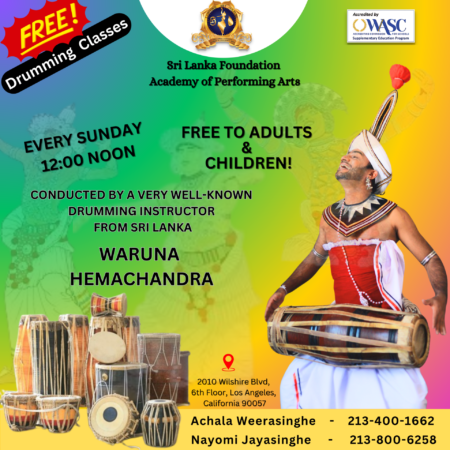The stilts were always vacant.
The first time I’d seen them, I was ambling along the high protective seawall of colonial Galle Fort gazing out at the pleasing blue surf of Sri Lanka’s southern coast. They clustered near the shoreline like olive toothpicks protruding from neglected late night cocktails, jammed deep into thick sand beneath shallow waves.
The stilts and their famous fishermen were found nowhere else and were more or less all I knew about this tiny nation; this teardrop-shaped island which, on maps, appears to fall from the tip of India, splashing into the vast Indian Ocean. Its rim of sand creates a white halo that is visible from space.
Atop the titanic wall, I tried to imagine how the scene I sought might appear; thin local men perched upon the triangle seats for hours, patiently waiting for their breakfast or dinner to kindly impale itself on their fishing hooks. But for now, imagining was the only way to conjure the evocative romance of ‘the old ways’ I wanted so much to witness for myself.
For a while, I sat and watched a boy cast his modern-day fishing pole out into the blue from the safety of a plot of sand near the seawall.
White foamy avalanches of the tide worked their way closer and closer to the great wall while a descending evening sun bathed the lonely stilts in a soothing shade of orange. The warm hues filled me with the fleeting sense that these strong vertical sticks were waiting like I was for their sitters to return.
Above me, seabirds patrolled the boulder-bejeweled shoreline on a clean salty breeze, hovering until a fish came into sight just beneath the surface. At exactly the right moment, they would fold their wings and plummet like a bomb to retrieve what they’d been looking for.
It was just after 7am. Rain flowed off the sides of the wooden patio overhang at my homestay, battering the broad leaves of low palm plants and pummeling the soggy dirt yard.
I sat at a metal coffee table trying to quickly down sweet sugar-filled crepes, bananas and delicious steamy coffee when Sajith pulled into the drive in his bright red motorbike vehicle. He had appointed himself my official private tuk tuk driver the previous day, when I’d needed a lift to Galle Fort. I had mentioned my hope of seeing the stilt fishermen in action, and like all tuk tuk drivers, Sajith knew a business opportunity when he heard one. He assured me he knew all the best places to see the fishermen, but we would need to head out early.
“Good morning!” my sturdy 35-ish driver approached cheerfully. He lingered a bit shyly at the edge of the overhang, only far enough inside to be out of the rain’s reach. “We have many good things to see today, we will find stick fishermen!”
It was one of those days when lounging inside away from the wet weather reading or watching a movie on my computer would have been my activity preference. “Sounds great!” I lied, stuffing my camera into my backpack and taking one last swig of coffee before darting through the rain toward the awaiting tuk tuk.
At the coast, the locals appeared unbothered by the drizzle. We whizzed past troops of fishermen preparing their boats and nets for capturing large takes of seafood to sell at market. Here and there, we passed little bunches of stilts, but not a single one was in use. I was starting to worry that I might not see any real life examples of the legendary practice.
Traffic on the A2 slowed and through stands of palms and cinderblock homes separating the highway from the ocean, I finally got a fast glimpse of stilt fishermen actually on their stilts!
“Sajith, look!” I exclaimed, pointing while also trying to maneuver my camera and zoom in for a shot.
He turned his head to follow the direction of my arm, jutting out the side of the tuk tuk, but it was too late, he missed it. “This is not the right place, anyway,” he told me. “But don’t worry, I know a good spot.”
I was growing antsy but my driver was in no hurry. We meandered through a small village and stopped at a roadside coconut stall where my driver ordered two coconuts for us. I peered from the back seat of the vehicle while the vendor smashed each coconut on a pointed metal spike in the ground to remove the yellow husk, then hacked at the green nut to create an opening to drink from. I wasn’t thirsty but politely gulped down as much as I could, anxious to continue on.
The “good spot” Sajith had been referring to was a tourist trap.
A small mass of foreigners was already gathered around a pod of six or seven evenly spaced stilts at the water’s edge, occupied by “fishermen” who were smiling, posing and generally hamming it up for the tourists. I knew a fee collector must be nearby, probably the man wearing a white floppy hat and a fanny pack. I pretended not to notice him and moved toward the spectacle, pushing into the crowd.
“Madam? Excuse me, madam?” Floppy Hat had not been fooled, he waved down my camera. “350 rupees, please.”
I protested, “350? No way, that’s too much!”
“Sorry, madam, that is the price.”
The whole scenario was woefully contrived, and absurdly overpriced: this was not what I had come for. I looked helplessly at Sajith, standing near the tuk tuk. He shook his head and motioned for me to forget it, it’s too much money, we’d go somewhere else. Floppy Hat shrugged as I trudged away, disappointed.
Sajith was not deterred; we hit the A2 again, the wheels of the tuk tuk rolling sticky on the wet cement. After a while, with no stilt sightings, my driver pulled over at another roadside store saying he wanted to get us bananas, despite my mumbling that I had eaten breakfast, and was anything but hungry.
When my driver emerged from the store carrying a handful of bananas, a smile and look of determination had crossed his face and he started the tuk tuk’s engine with a firm hand. I had seen him talking to a cashier inside…maybe he’d gotten a promising lead?
Five minutes later, we pulled off the side of the road near what looked like a small family home. Beyond it, a short and narrow pathway lead to the beach, where I could just make out the forms of several stilt fishermen.
“It’s ok if I go?” I asked Sajith, feeling unsure, as if I were intruding.
“Yes, it is ok, I will talk to them.”
We followed the path to the water, and four men holding fishing poles, each perched on their stilt, turned to look at us. My driver spoke to them in Sinhalese and I could see that they were not troubled by me, the foreigner with a large camera aimed directly at them. Sajith motioned for me to have at it, and retreated to a nearby log to wait for me.
I smiled and nodded at the men, bowing my head to thank them, and dived in: literally splashing and wading through the water in my tennis shoes, which were already soaked from the downpour. Miraculously, the rain itself had ceased, and the heavens were beginning to let through patches of grey-blue sky and sunlight.
It was thrilling and beautiful and genuine. The men used not modern fishing poles but simple willow-like branches, as they’d done for generations. In 2004 when the great tsunami hit Sri Lanka, this practice had nearly gone extinct. But slowly, with sheer will, it had come back. It had survived.
I marveled at the quiet patience of these fishermen. Though the sea thrashed and boiled below them, they knew that if they waited long enough and persevered, the treasure they sought would eventually appear.
https://wallflowerwanderer.com






















